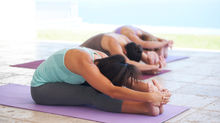Why Pilates is Good for Everyone

“Good posture can be successfully acquired only when the entire mechanism of the body is under perfect control” - Joseph Pilates
Very few forms of exercise suit everybody, but Pilates is an exception. Recommended by Physiotherapists and medical professionals, Pilates really can help to correct postural alignment, increase core strength, muscle flexibility and joint mobility. Whatever your age or fitness level, Pilates movements can be adapted and modified to suit anyone and everyone, from absolute beginners to professional athletes.
So, how does Pilates work?
The original Pilates method, developed by Joseph Pilates focuses on six key principles. When combined under guided and qualified instruction, the Pilates method is a powerful way of increasing our body self-awareness and learning how to make the necessary adjustments in our movements to correct muscle imbalances.
Concentration
Pilates involves an intense focus on the movements and exercises with purpose and intention. Through concentration we can identify areas of weakness and tightness and focus on activating and engaging the right muscle groups.
Control
Through focused concentration, we learn to control and adjust the muscles (large and small) as we work against gravity and resistance, instead of letting the muscles run away from us.
Centering
Centering means that we always work from the centre of the body, in correct postural alignment. The centre of the body refers to the ‘core’ group of muscles within the abdomen, lower and upper back, hips, buttocks, and inner thighs. All movement in Pilates should begin from a strong and stable ‘core’. With regular practice, the centre of our body becomes like the strong trunk of an oak tree, with the branches (limbs) moving effortlessly and freely.
Flow
All Pilates exercises focus on executing with a gentle beauty and grace, creating an elegant flow of movement as we transition from one movement to another. This flow helps to maintain an even and controlled pace, as well as build strength in the core muscles. Each flowing movement creates physical energy which can then freely flow through every muscle in the body.
Precision
The aim is to focus on quality and accuracy, rather than quantity. Instead of energetic repetitions of exercises, a critical element of Pilates is taking a more considered approach. The goal is to carry out each movement with as much precision and control as possible. Performing each exercise correctly, ensures we work the right muscle groups to build greater strength, flexibility and mobility.
Breathing
Pilates uses thoracic breathing techniques to fuel the movements of the body. Thoracic breathing, involves inhaling deeply through the nose into the back and sides of the rib cage and then exhaling through the mouth to engage the deep abdominal and pelvic floor muscles.
Co-ordinating the breath with movement, promotes an increase in oxygenated blood through the body, and enables a deeper connection and activation of the core muscles.
Want to know more? Keep an eye out for more Pilates blogs to come with suggested Pilates exercises that address specific postural problems.






















